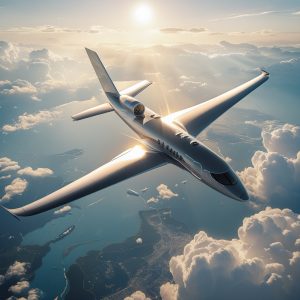
Throughout history, humans have always looked to the sky with wonder. The flight of birds, the clouds drifting aimlessly in the wind, and the stars shining at night have all inspired a desire to break free from earthly limits. This yearning for freedom found its expression in the invention of flight. The ability to take to the skies not only revolutionized transportation but also symbolized humanity’s quest for autonomy, exploration, and self-expression. The Flight of Air-Borne is more than just the story of an aircraft or a mode of travel—it is the embodiment of freedom itself.
A Dream of Soaring Above
The idea of flight has captivated the human imagination for centuries. Ancient myths told of gods who flew between realms, and early inventors like Leonardo da Vinci sketched plans for machines that could take flight. Yet, despite centuries of dreams and aspirations, it wasn’t until the early 20th century that human flight became a reality. The Wright brothers’ first powered flight in 1903 marked a monumental turning point, symbolizing the realization of humankind’s age-old desire to conquer the skies.
From that point on, the notion of freedom became intertwined with the ability to fly. Airplanes weren’t just vehicles—they were gateways to exploration. They allowed individuals to experience a world beyond their immediate surroundings and opened up new frontiers. No longer confined to the ground, people could cross vast oceans, scale towering mountains, and see the world from a perspective that had previously only existed in dreams.
Air Travel: A Symbol of Independence
The act of flying has always been a metaphor for breaking free from constraints. It’s not just about physical movement; it’s about transcending limitations. Airplanes represent liberation from the confines of time and space. The ability to travel long distances in a matter of hours, rather than days or weeks, is a form of liberation in itself. It frees us from the geographic borders that once defined our world and allows us to move freely, connect with others across the globe, and explore new cultures, ideas, and experiences.
The flight of an airplane can also be seen as an individual’s journey toward personal freedom. It represents the courage to embrace the unknown, to take risks, and to soar to new heights. Whether it’s embarking on a new adventure, seeking opportunity in a new city, or traveling to explore the world’s wonders, flying is often linked with personal growth and self-discovery.
The Future of Flight: Redefining Freedom
As aviation technology continues to evolve, the concept of freedom takes on new meaning. With the development of electric aircraft, drones, and space tourism, flight is no longer limited to traditional commercial airlines. The dream of personal flight is becoming a reality with innovations like flying cars and self-piloting vehicles. The future promises even greater freedom in the skies, allowing people to travel without the traditional limitations of airports and airspace congestion.
Moreover, the rise of space tourism is extending the idea of freedom even further. Companies like SpaceX, Blue Origin, and Virgin Galactic are making it possible for ordinary people to experience the vastness of space, offering a new kind of freedom that was once the exclusive domain of astronauts. This leap into space symbolizes the ultimate release from the boundaries of Earth, offering a new frontier for humanity to explore.
Conclusion: The Endless Sky of Possibilities
The Flight of Air-Borne: A Story of Freedom is more than just a tale of technology—it’s a reflection of humanity’s eternal yearning for independence and exploration. Flight has always been about more than simply reaching new destinations. It represents the courage to dream, to break free from limitations, and to explore new possibilities. As we continue to push the boundaries of aviation, we are reminded that freedom—whether physical, emotional, or intellectual—lies not in the ground beneath our feet, but in the sky above us, waiting to be explored.